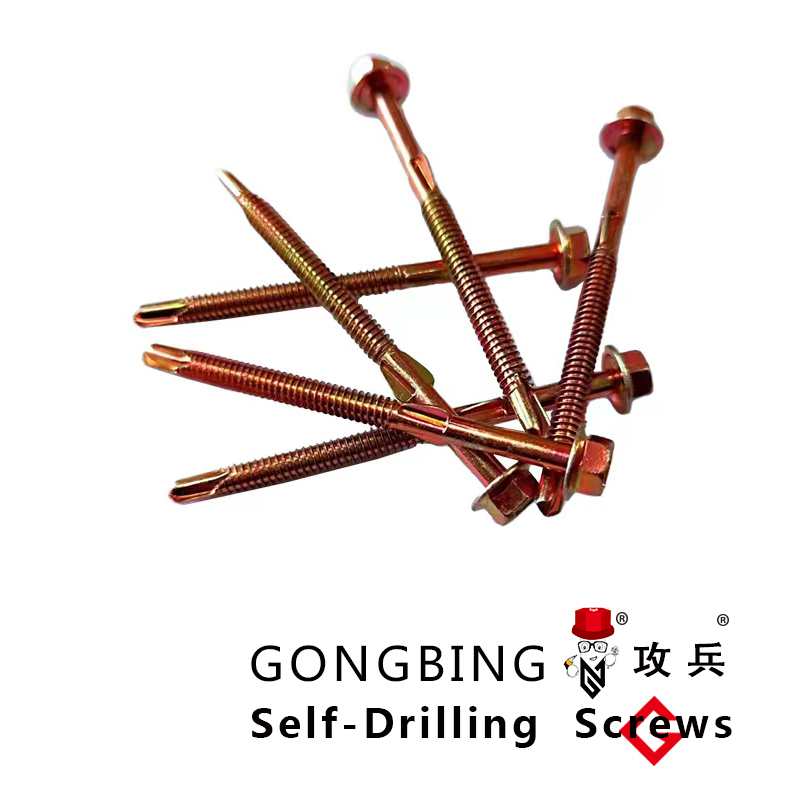self drilling expansion anchors
Self-Drilling Expansion Anchors A Comprehensive Overview
Self-drilling expansion anchors are specialized fasteners that have revolutionized the way construction and engineering professionals secure fixtures and components to various substrates. These innovative anchors combine the features of a traditional expansion anchor with the convenience of a self-drilling screw, providing a reliable solution for anchoring in different building materials, including concrete, masonry, and other solid substrates.
Understanding Self-Drilling Expansion Anchors
Self-drilling expansion anchors are designed to simplify the installation process by allowing the anchor to cut into the base material without the need for pre-drilling a hole. This is achieved through the use of a self-tapping drill point on the anchor screw, which enables it to pierce through the material seamlessly. Once the anchor is driven into the substrate, its unique expansion mechanism activates, securely gripping the surrounding material.
The expansion mechanism typically involves either a sleeve or wings that expand outward as the anchor is tightened. This ensures a tight fit and distributes the load effectively, making self-drilling expansion anchors suitable for applications that require high load-bearing capacity.
Advantages of Self-Drilling Expansion Anchors
1. Ease of Installation One of the primary benefits of self-drilling expansion anchors is their straightforward installation process. The self-drilling feature eliminates the need for additional tools or pre-drilling, saving time and reducing labor costs on construction projects.
2. Versatility These anchors are versatile and can be used in a variety of applications, including securing brackets, shelving, electrical boxes, and plumbing fixtures. They work exceptionally well in both horizontal and vertical orientations.
3. Strong Load Capacity The design of self-drilling expansion anchors allows them to handle substantial loads. The expansion provides a strong grip and ensures that the anchor remains securely in place, even under stress.
4. Time Efficiency By merging drilling and anchoring into a single step, these anchors significantly speed up the installation process. This is particularly advantageous in projects with tight timelines.
5. Reduced Risk of Damage Since self-drilling anchors do not require pre-drilling, there is a reduced risk of damaging the substrate. This is crucial in applications where maintaining the integrity of the material is essential.
self drilling expansion anchors

Applications of Self-Drilling Expansion Anchors
Self-drilling expansion anchors can be employed in a multitude of construction and renovation scenarios. Common applications include
- Wall Mounting Ideal for installing items such as shelves, picture frames, and mirrors, providing a strong hold without compromising the integrity of the wall.
- HVAC and Plumbing Used to secure HVAC ductwork and plumbing fixtures, ensuring stability and support throughout their operational lifespan.
- Electrical Installations Suitable for attaching electrical boxes and conduit to walls, ensuring that crucial electrical components are firmly fixed in place.
- Outdoor Structures Their durable design makes self-drilling expansion anchors perfect for securing outdoor fixtures, such as fences, gates, and signage, to various substrates.
Considerations When Selecting Self-Drilling Expansion Anchors
While self-drilling expansion anchors offer numerous benefits, it is essential to choose the right anchor for your specific application. Factors to consider include the type of substrate, the load requirements, and the environmental conditions. Additionally, using the appropriate size and type of drill bit is crucial to ensure a proper fit and function.
Conclusion
Self-drilling expansion anchors have established themselves as a go-to choice for construction and DIY professionals. Their ease of use, robust design, and versatility make them an invaluable tool for a wide range of applications. As construction techniques continue to evolve, self-drilling expansion anchors will remain integral to ensuring that structures are both stable and secure. By understanding the advantages and proper application of these anchors, professionals can enhance the quality and efficiency of their projects, leading to successful and durable results.
-
Weatherproof Plastic Expansion Anchors for OutdoorNewsJun.06,2025
-
Sustainability in the Supply Chain: Eco-Friendly TEK Screws ProductionNewsJun.06,2025
-
Load-Bearing Capacity of External Insulation FixingsNewsJun.06,2025
-
Double Head Bolts: Enhancing Efficiency in Industrial MachineryNewsJun.06,2025
-
Corrosion Resistance in Chipboard Screws: Coatings for Wholesale DurabilityNewsJun.06,2025
-
Butterfly Toggle Bolts : Enhancing Structural ResilienceNewsJun.06,2025
